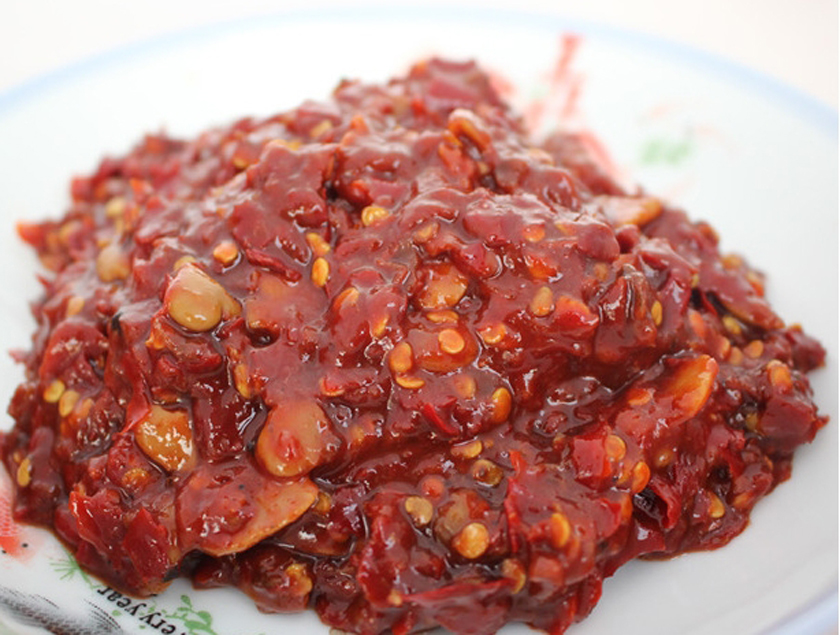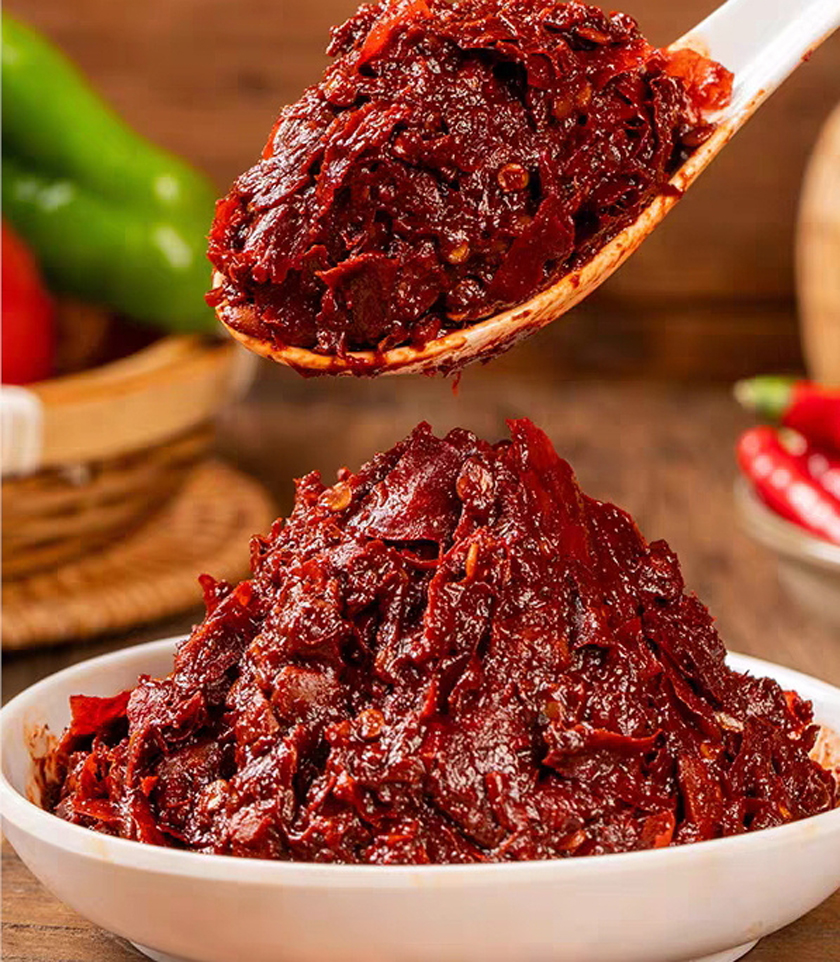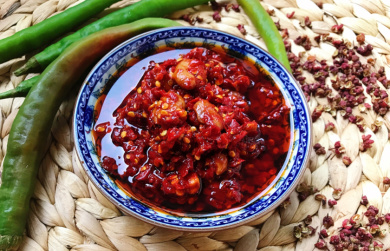What Is Pixian Doubanjiang? A Spicy Soul of Sichuan Cuisine

Do you know what the soul of Sichuan cuisine is? Pixian Doubanjiang definitely deserves a mention! What exactly is this bright red and oily sauce? Want to know why it smells so good? Let's dig into it together!
The History and Origin of Pixian Doubanjiang
Pixian Doubanjiang was born during the Xianfeng period of the Qing Dynasty (around the mid-19th century). Initially, it was made and spread among the people by a merchant named "Chen" in Pixian County, Chengdu, Sichuan (now Pixian District).
Thanks to the unique local climate conditions, it has developed a special fermented flavor.
During the Guangxu period of the Qing Dynasty, the "Yifenghe" Sauce Factory promoted it as a tribute, and its fame spread far and wide.
In 2008, it was listed as a national geographical indication product and is even hailed as the "soul of Sichuan cuisine", becoming the essential flavoring for Sichuan dishes.
The Raw Materials of Pixian Doubanjiang
Broad Beans: Locally selected "Ox-foot Beans", rich in protein.
Chili Peppers: Mainly Erjingtiao peppers, with a bright red color and rich aroma.
Others: High-quality flour and refined cooking salt.
Through traditional processes such as turning, sunning, and airing overnight, these raw materials develop a unique charm during the long fermentation process.

The Production Process of Pixian Doubanjiang
The core processes include:
1.Raw Material Preparation: Select Erjingtiao chili peppers (remove the stems and cut into sections) and broad beans (remove the shells, soak, and peel).
2.Koji-making and Fermentation: Mix broad beans with flour and glutinous rice to make koji cakes, and send them to the koji room for natural fermentation for more than 6 months to form sweet broad bean paste.
3.Chili Embryo Preparation: Mix chili peppers with salt and expose them to the sun, stirring twice a day. They will naturally curl to form chili embryos, which takes about 3 months.
4.Mixed Fermentation: Mix the sweet broad bean paste and chili embryos in proportion and put them into earthenware jars. "Turn, sun, and air" them daily. After 18 months to 3 years of natural fermentation, they will mature with a rich sauce aroma.
5.Product Standards: Special-grade Doubanjiang requires more than 3 years of fermentation. The broad bean grains should be crispy and dissolve in the mouth, with a prominent sauce ester aroma; first-grade Doubanjiang requires more than 1 year of fermentation, with a mellow spiciness.
The Taste of Pixian Doubanjiang
1.Basic Flavors
Salty and Umami: The strong saltiness is the most basic feature, with a unique umami flavor from fermented beans.
Spiciness: A mild and lasting spiciness that is not overly pungent but has layers.
Slight Sweetness: A subtle sweetness resulting from natural fermentation.
Salty and Aromatic: A unique aroma from fermented fermented soybeans.
2.Layers of Flavor
First Layer: The strong saltiness is felt first when tasting.
Second Layer: Then, a mild spiciness gradually emerges.
Third Layer: Finally, a lasting bean aroma and fermented aroma remain.

The Spiciness of Pixian Doubanjiang
The spiciness of Pixian Doubanjiang is moderately mild and not overly pungent.
Its spiciness comes from red chili peppers, but after fermentation, it becomes softer, not irritating the throat. It places more emphasis on the aroma and flavor layers. Compared with pure chili sauce, it is more suitable as a basic sauce to enhance the flavor when stir-frying.
What Dishes Can Be Made with Pixian Doubanjiang?
Pixian Doubanjiang can be used to make a variety of classic Sichuan dishes:
Main Dishes:
Mapo Tofu
Twice-Cooked Pork
Boiled Fish / Beef
Fish-Fragrant Shredded Pork
Spicy Chicken
Seasoning for Stir-Fries:
Stir-Fried Green Vegetables
Stir-Fried Preserved Pork
Stir-Fried Eggplant
Stir-Fried Shredded Potatoes
Stir-Fried String Beans
Hot Pot Base:
Spicy Red Oil Hot Pot
Malatang
Mao Cai
Other Applications:
Noodles with Fermented Bean Sauce
Marinated Flavors
Seasoning for Cold Dishes
Enhancing the Flavor of Instant Noodles
The Shelf Life of Pixian Doubanjiang
Unopened: It can be stored at room temperature for 18 - 24 months. Store it in a cool place away from light.
Opened: Refrigerated storage can last for 6 - 12 months. If stored at room temperature, it is only 3 - 6 months.
Storage Suggestions:
It is best to store it in the refrigerator after opening.
Use a clean spoon each time you take some.
Store it tightly sealed to avoid getting damp.
The container should be clean and dry.
Note: If there is an unusual smell or mold, discard it immediately.
How to Eat Pixian Doubanjiang?
1.When Stir-Frying:
First, sauté the Doubanjiang until fragrant (slowly stir-fry over low heat to release the red oil).
Add the main ingredients and stir-fry.
Season as needed.
2.Seasoning Methods:
It can be directly added to stir-fries.
Used as a sauce for seasoning.
Mixed with noodles.
3.Making Dipping Sauce:
Reference Dosage: Generally, use 1 - 2 tablespoons for a dish serving 2 - 3 people.
Adjust according to personal taste.
It is recommended to use less when using it for the first time.
4.Precautions:
Doubanjiang is relatively salty, so pay attention to controlling the amount.
It is best used in combination with other seasonings.
Pay attention to the heat when stir-frying.
5.Common Combinations:
Minced garlic, minced ginger
Scallions
Cooking wine
Light soy sauce
White sugar (to enhance freshness and reduce greasiness)























